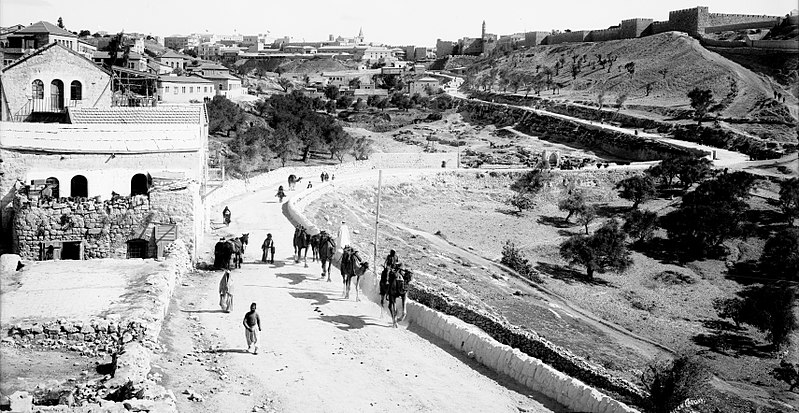The Valley that Gave Hell Its Name

The Valley of Hinnom (also called Gehenna or Gehinnom) is a valley that stretches to the west and south of the old city of Jerusalem. It starts at the Kidron valley on the eastern side, surrounds Mount Zion and continues to the Mamilla complex in the west.
The Valley of Hinnom is mentioned many times in the Bible, and seems to have been a well-known and important landmark in biblical times. The origin of the name is unclear, and apparently it is called after a man who owned land in the area.
According to Jewish belief, The Valley of Hinnom is the place where the worship of the Moloch cult took place at the end of the First Temple period. As part of the terrible pagan worship, the cult followers would sacrifice children on specially purposed platforms. According to the Bible, even some of the kings of Judah, such as Ahaz, were sinners that followed the idolatrous worship and sacrificed their sons. The tradition associated with the valley was so horrific that it gave its name to the place where the wicked dwell after their death - Hell (Gehinnom in Hebrew).
The prophet Jeremiah, who was active in the end of the First Temple period, strongly protested against the pagan worship that had become common in Jerusalem during his time. In his prophecy on the destruction of Jerusalem by the Babylonians, Jeremiah states that the valley will be called the Valley of Slaughter, due to the large number of those who will die in the destruction.
The Valley of Hinnom is also related to the Christian tradition. According to the New Testament, Judas Iscariot, who betrayed Jesus and handed him over to the Roman soldiers, received 30 silver Shekels for his actions. With this money he bought a plot of land in the Valley of Hinnom, which is why the place is called "Field of Blood", or "Akeldama” in Aramaic. According to another version, after realizing his wrongdoing Judas returned the money to the priests and ended his life here. This part of the valley was used in ancient times as a public burial ground for Christian pilgrims who died during their visit to Jerusalem.
The Valley of Hinnom was part of the no-man's land that separated East and West Jerusalem between 1948 and 1967. During the War of Independence, a military cable car was operated over the valley, connecting the Israeli part of the city with the Mount Zion enclave held by the Israeli army.
כיום שוכנת בגיא בריכת הסולטן – בריכת אגירה גדולה שנבנתה בידי הסולטאן סולימאן המפואר לאחר כיבוש ירושלים על ידי העות’מאנים במאה ה- 16. הבריכה הוסבה לתיאטרון פתוח בו מתקיימים כיום מופעים וירידים. בגיא שוכנים גם הסינמטק העירוני של ירושלים ו- “החווה בגיא” המשחזרת שיטות גידול ומלאכות חקלאיות קדומות. בצידו המערבי של הגיא נמצא מצוק שהפך לאתר טיפוס הצוקים הראשון בישראל. מעל לגיא משתרע הגשר התלוי הארוך ביותר בישראל, שאורכו כ- 200 מטר, המחבר את הר ציון עם צידו השני של הגיא.

(Anecdote authored by: עמיר)
(Number of views: 28)
